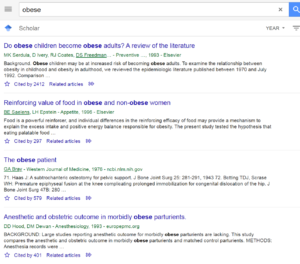
Thus, through hydrogenation, the liquid consistency of the unsaturated fat is transformed into a soft-solid form that is generally more pliable than the typical hard-solid consistency of a saturated fat. The trans fat molecule is linear, and, with the exception of the twist in the centre, this structure resembles the linear form of a saturated fat. This twist places the chains of hydrocarbons connected by the double bond in opposite planes, and thus the molecule is described as having a trans configuration. Following hydrogenation, an unsaturated fat is modified into a different configuration that is characterized by a single twist in the centre of the molecule (forcing one side of the “v” to twist down). The hydrocarbon chains lie in the same plane of the molecule, which forms a cis configuration (in this case, two chains form a “v” shape, with the double bond at the point of the “v”). Unsaturated fats contain chains of hydrocarbons connected by one or more double bonds. Liquid fat, such as vegetable oil, is made up of molecules of unsaturated fatty acids. Know about trans fat and how they are harmful to health See all videos for this article By the 1980s, many food manufacturers and restaurants had stopped using tallow and lard, replacing these fats with trans-fat based products, which had similar smoke points and were thought to be healthier. In the following decades, the use of hydrogenation to stabilize the shelf life of food products grew rapidly.

Hydrogenation was important particularly in the production of margarine, which was used in place of butter when the latter was rationed during World War II. The first food product developed that contained trans fat was Crisco vegetable shortening, introduced in 1911 by Procter & Gamble Company. Therefore, a stable form of unsaturated fat had the potential to significantly extend the shelf life and value of a variety of foods. Products containing unsaturated fats were susceptible to rancidity upon exposure to air, resulting in a short shelf life. This process, for which Normann received a patent in 1903, was eagerly adopted by food manufacturers. (Sabatier, for his discoveries concerning catalysts, shared the 1912 Nobel Prize for Chemistry with French chemist Victor Grignard.) In 1901 German chemist Wilhelm Normann experimented with hydrogenation catalysts and successfully induced the hydrogenation of liquid fat, producing semisolid fat, which came to be known as trans fat. The synthesis of hydrogenated compounds originated in the 1890s, when French chemist Paul Sabatier discovered that metal catalysts could be used to precipitate hydrogenation reactions. Trans fat, also called trans fatty acid or partially hydrogenated fat, fat produced from the industrial process of hydrogenation, in which molecular hydrogen (H 2) is added to vegetable oil, thereby converting liquid fat to semisolid fat. SpaceNext50 Britannica presents SpaceNext50, From the race to the Moon to space stewardship, we explore a wide range of subjects that feed our curiosity about space!.Learn about the major environmental problems facing our planet and what can be done about them! Saving Earth Britannica Presents Earth’s To-Do List for the 21st Century.Britannica Beyond We’ve created a new place where questions are at the center of learning.100 Women Britannica celebrates the centennial of the Nineteenth Amendment, highlighting suffragists and history-making politicians.
FAQT ABBREVIATION MEDICINE HOW TO

#WTFact Videos In #WTFact Britannica shares some of the most bizarre facts we can find.Britannica Classics Check out these retro videos from Encyclopedia Britannica’s archives.Britannica Explains In these videos, Britannica explains a variety of topics and answers frequently asked questions.


 0 kommentar(er)
0 kommentar(er)
